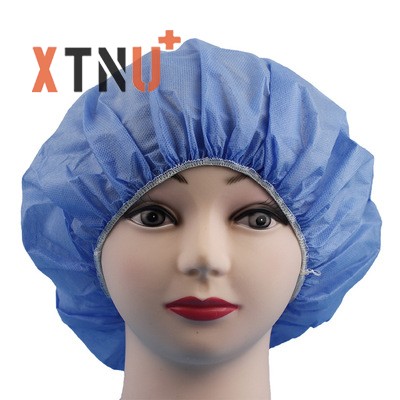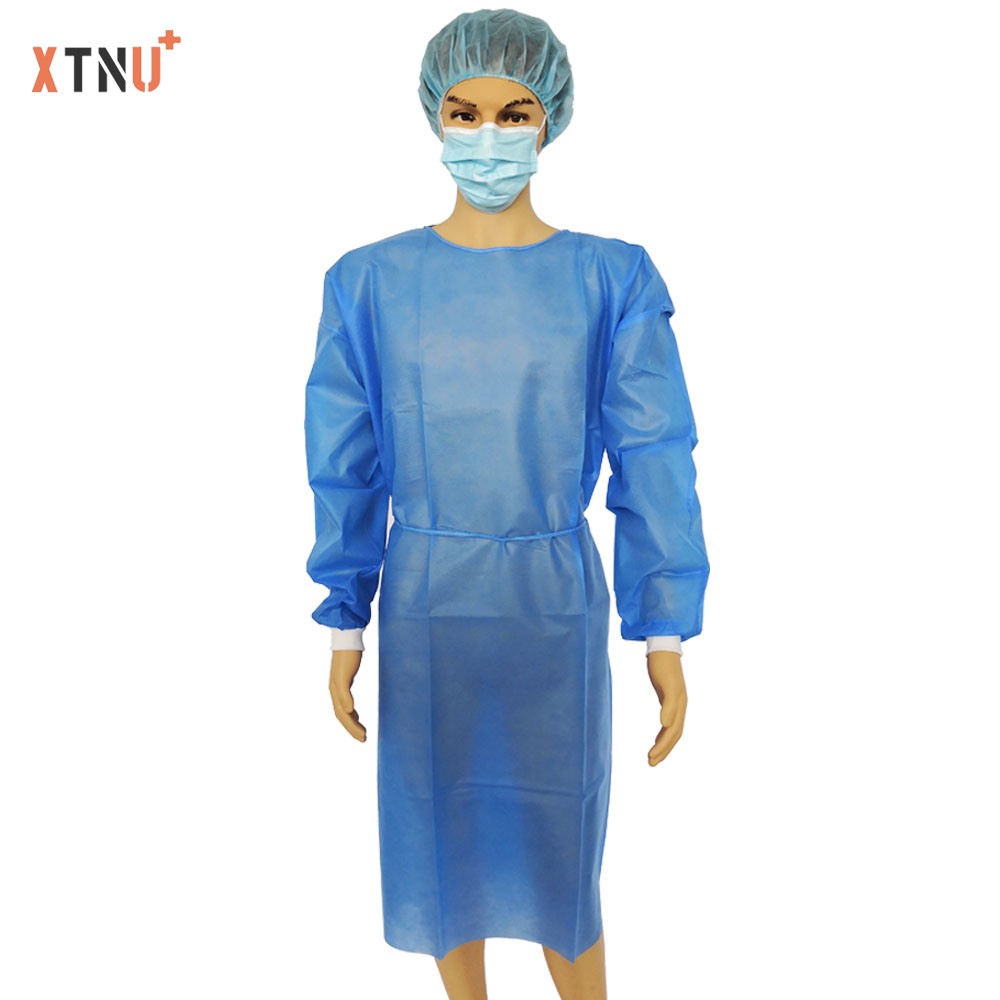
What is SMS, SMMS, SMMMS nonwoven fabric?
SMS is the abbreviation of "Spunbond + Meltblown + Spunbond Nonwovens", that is a combined nonwoven fabric which two layers of spunbond have been combined with one layer of meltblown nonwovens inside, conforming them into a layered product, called SMS nonwoven fabric (spun-melt-spun). If combined with two layers of meltblown nonwoven inside, it's called SMMS nonwoven fabric (spun-melt-melt-spun). In the same way, combined with three layers of meltblown nonwoven inside, it's called SMMMS nonwoven fabric (spun-melt-melt-melt-spun).
SMS, SMMS, SMMMS are strong and offer the intrinsic benefits of fine fibers such as fine filtration, low pressure drop as used in face masks or filters and physical benefits such as acoustic insulation as used in dishwashers. One of the largest users of SMS, SMMS or SMMMS materials is the hygienic or medical industry, such as disposable diaper, feminine care products, facemask, surgical drape, surgical pack, surgical gown, etc..
SMS, SMMS, SMMMS nonwoven fabric can be treated by special process, to be repellent, anti-static, absorbent, flame retardant, anti-bacterial, UV resistant, fragrant, etc.. The treated fabric will be functioned with various features.
SMS fabric has the advantages of high strength, good filtering performance, no adhesive, non-toxic and so on. Currently it is mainly used in medical and health labor protection products such as surgical gowns, surgical caps, coveralls, scrub suits, handbags, etc..
Performance:
It is non-toxic, inodorous, and efficient in separating bacteria. Through special treatment of equipment, it can achieve the performance of antistatic, anti-alcohol, anti-plasma, water repellent, water production and so on.
Features of non-woven fabrics: durability, disposability. Insulativity and non-conductivity. Softness and stiffness. Density and expansion. Isotropic, anisotropic. Filterability, breathability and impermeability. Elasticity and stiffness. Light, loose and warm. Thin as cicada wings, thick as felt. Waterproof and breathable. Formed by ironing, sewing and molding. Flame retardant and antistatic. Water-permeable, waterproof, abrasion-resistant and napped. Wrinkle resistance, good elasticity, high moisture absorption and water repellency.
1. Lightweight: Polypropylene resin is used as the main raw material for production. The specific gravity is only 0.9, only three-fifths of that of cotton. So it is fluffy and feels good.
2. Soft: It is composed of fine fibers (2-3D) and is formed by light-pointing hot-melting bonding. The finished product is moderately soft and comfortable.
3. Water-repellent and breathable: Polypropylene slices do not absorb water, have zero moisture content, and the finished product has good water-repellent properties. It is made from 100% fibers and is porous and air-permeable. It is easy to keep the cloth dry and it is easy to wash.
4. Non-toxic and non-irritating: The product is produced with FDA food-grade raw materials, does not contain other chemical components, and has stable performance. It is non-toxic, non-odor, and does not irritate the skin.
5. Antibacterial and anti-chemical agents: Polypropylene is a chemically blunt substance, not moth-eaten, and can isolate the erosion of bacteria and insects in the liquid; antibacterial, repellent to alkali corrosion, and the strength of the finished product will not be affected by erosion.
6. Antibacterial property: The product is water-repellent, not moldy, and can isolate the erosion of bacteria and insects in the liquid, and is not moth-eaten.
7. Good physical properties: It is produced directly by spreading polypropylene spun filament into net and thermally bonding it. The strength of the product is better than that of ordinary staple fiber products. The strength is non-directional and it is similar in the vertical and horizontal directions.

Usage:
(1) Medical and sanitary cloths: surgical gowns, coveralls, disinfection wraps, masks, diapers, sanitary napkins, etc.;
(2) Home decoration cloths: wall cloth, table cloth, bed sheet, bedspread, etc.;
(3) Garment accessory cloths: lining, fusible lining, wadding, shaped cotton, various synthetic leather base cloth, etc.;
(4) Industrial cloths: filter material, insulating material, cement packaging bag, geotextile, covering cloth, etc.;
(5) Agricultural cloths: crop protection cloth, seedling raising cloth, irrigation cloth, thermal insulation curtain, etc.;
(6) Environmental protection materials: sanitation products such as filter non-woven fabrics, oil-absorbing cloth, etc.;
(7) Insulation cloth: insulation materials and clothing accessories;
(8) Anti-feather non-woven fabric for anti-feather running;
(9) Others: space cotton, thermal insulation and soundproof materials, etc..
-
2023-05-13
Disposable Nylon Hai…
Disposable Nylon Hair Net Blac…
-
2023-05-13
ladies black hair ne…
ladies black hair nets invisib…
-
2023-05-13
Prevent Hair Falling…
Prevent Hair Falling 21" …
-
2023-05-13
Disposable nylon mes…
Disposable nylon mesh cap
-
2023-04-11
Beard Cover, Nylon
Beard Cover, Nylon
